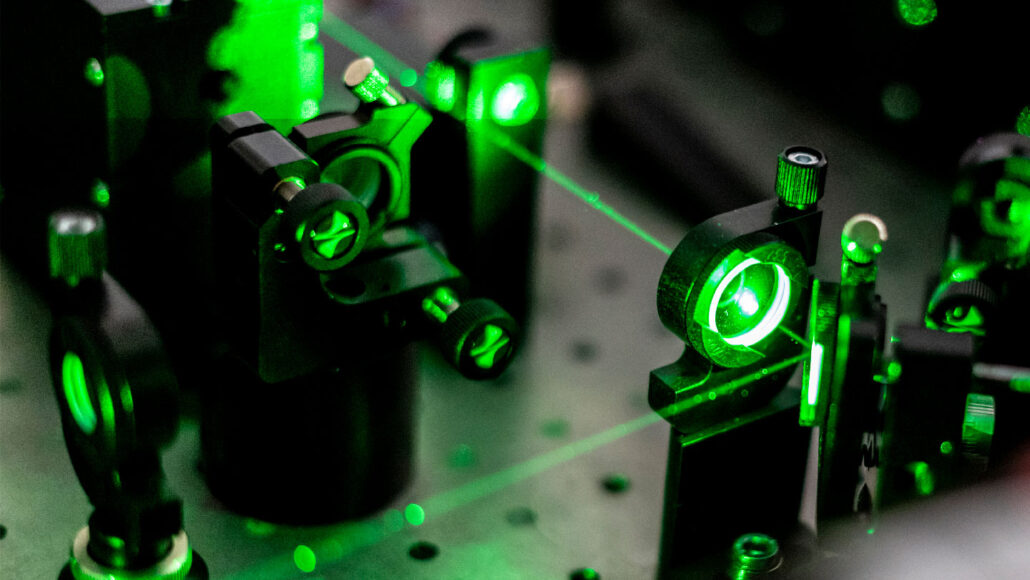Summary of the journal article: Optical guiding in 50-meter-scale air waveguides

The goal of projecting high-powered laser beams over long distances in the atmosphere has many potential applications. In past experiments, researchers used femtosecond filaments in air to create sub-meter length air waveguides that lasted for milliseconds. This new research demonstrates the ability to create air waveguides at the 50-meter scale, making many practical applications possible. The team employed a new method called multi-filamentation of Laguerre-Gaussian LG01 “donut” modes for energy deposition. They first studied the physics of this method over a shorter 8-meter range in the lab and then used this knowledge to guide optical beams over a distance of ~45 meters in a hallway outside the lab. The waveguides demonstrated long lifetimes of tens of milliseconds when a continuous wave probe beam was injected.
Researchers have discovered a new way to use fiber-optic cables by incorporating laser waveguides, which can transmit signals over long distances with minimal loss. This advancement could greatly improve the speed and efficiency of internet and communication systems.
According to physicist Howard Milchberg of the University of Maryland, the latest experiments have surpassed his team’s previous waveguide attempts by more than 60 times, achieving a waveguide length of nearly 50 meters. The researchers used a laser in “doughnut mode”, in which the beam has a hollowed-out core along its length, resembling a stack of luminous doughnuts. This creates a hot, tubular air layer encased by cooler, denser air, similar to a fiber-optic cable made of air. The dense air acts as the core, while the hot air around it serves as cladding, instead of the transparent core and plastic cladding used in conventional fiber optics.
Traditionally, fiber-optic cables use light to transmit data through glass or plastic fibers. However, the light can only travel a certain distance before it weakens and must be amplified or “repeated.” The new method uses laser waveguides, which are small channels etched onto a chip, to guide the light. This allows for the light to travel much further without weakening, resulting in a stronger and more reliable signal.
Not only does this method improve signal strength, but it also allows for more data to be transmitted at once. The laser waveguides can multiplex, or split, the data into different channels, increasing the amount of information that can be sent through the fiber-optic cable.
This technology has the potential to revolutionize the way we transmit data and improve internet speeds and reliability. It can also be used in other industries such as medical imaging and sensing. The researchers behind the discovery believe that this technology will become widely adopted in the near future.
In summary, the new discovery of laser waveguides integrated with fiber-optic cables could greatly improve the speed and efficiency of internet and communication systems by allowing for stronger and more reliable signals to be transmitted over longer distances and increased data to be transmitted at once.